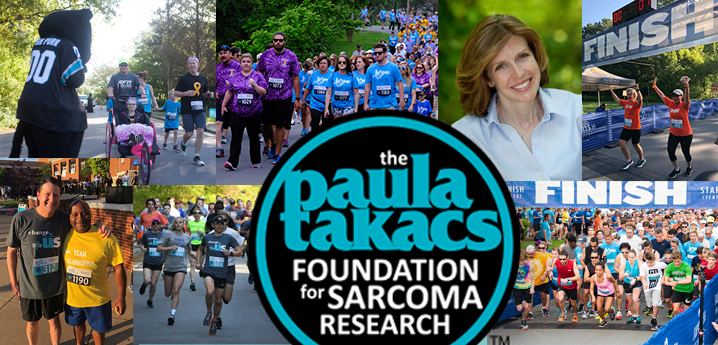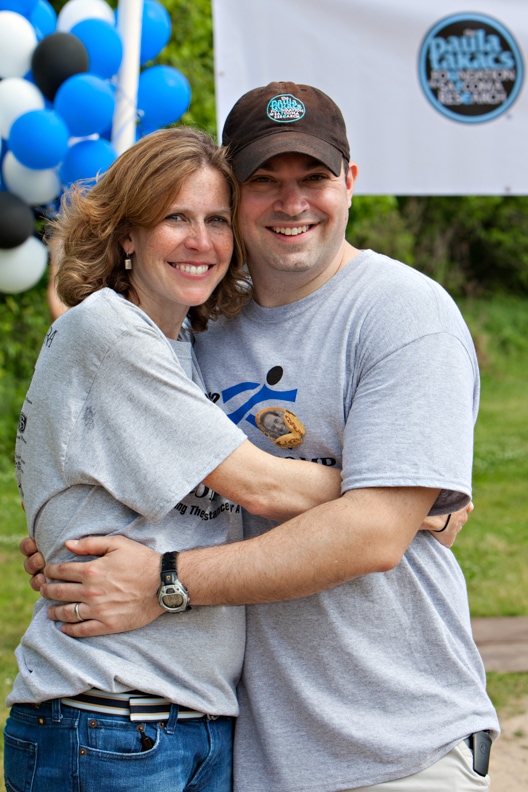When it comes to cancer activism, breast cancer steals the show. It is easy to find ongoing research, support groups, and organizations dedicated to raising awareness for this common form of cancer. However, when it comes to lesser-known cancers like sarcoma, the conversation is much quieter. That is until Paula Takacs received her own sarcoma diagnosis in 2004. Six years after learning she had liposarcoma, Paula and her husband Geof founded the Paula Takacs Foundation for Sarcoma Research (PTF) in 2010 to raise awareness of the devastating disease, which presents itself in more than 50 variations, and to raise vital funds to support life-saving research and clinical trials.
An Innovative Leader
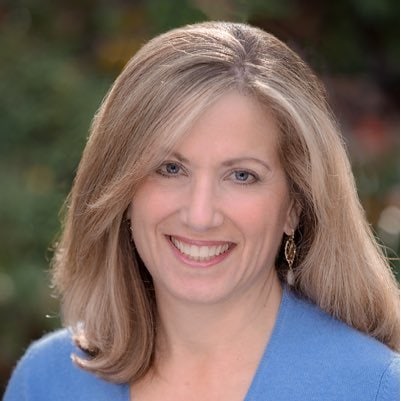 After the disease claimed Paula’s life following a ten-year battle, close friend Sue Udelson (right) knew she had to carry on her friend’s legacy by taking her place at the helm of the Paula Takacs Foundation. Sue had experienced the devastation of sarcoma once before when her brother passed from the disease and she resolved to dedicate her life to fighting back. Under Sue’s leadership, the Paula Takacs Foundation has brought together patients, survivors, and supporters on a united front to raise awareness of the disease and improve research and treatment of sarcomas. Inspired by Sue’s determination – and in looking ahead to PTF’s flagship fundraiser, the Sarcoma Stomp, on April 27 – we sat down with Sue to learn more about her journey.
After the disease claimed Paula’s life following a ten-year battle, close friend Sue Udelson (right) knew she had to carry on her friend’s legacy by taking her place at the helm of the Paula Takacs Foundation. Sue had experienced the devastation of sarcoma once before when her brother passed from the disease and she resolved to dedicate her life to fighting back. Under Sue’s leadership, the Paula Takacs Foundation has brought together patients, survivors, and supporters on a united front to raise awareness of the disease and improve research and treatment of sarcomas. Inspired by Sue’s determination – and in looking ahead to PTF’s flagship fundraiser, the Sarcoma Stomp, on April 27 – we sat down with Sue to learn more about her journey.
Atrium Health Foundation: You have been touched personally by sarcoma first with your brother and then your dear friend, Paula Takacs. Do you have any advice or words of encouragement for others who are supporting a loved one or battling this disease themselves?
Sue Udelson: Those who are diagnosed with sarcoma – as well as caretakers, family members, and those who lose loved ones to it – can feel pretty alone in a world that centers its support widely on known cancers. I saw that first-hand with my brother, whose support came from a patient across the country whom he matched with by Imerman Angels and would speak to by phone. I love that the Paula Takacs Foundation exists not only to move that very stubborn needle of progress in sarcoma science but also to create a family atmosphere for local survivors and families who’ve lost loved ones. Thus far, we have two annual social events that I’ve managed to craft with almost zero budget – a feat that I know Paula would be applauding me for as she was one thrifty chick. It is so amazing and humbling to see survivors meet each other, parents who’ve lost children hug each other and to feel the happy vibe in the room. Community is uplifting and healing! Bottom line: I want the people impacted by a sarcoma diagnosis to feel hopeful with the expertise of Levine Cancer Institute and the embrace of the Paula Takacs Foundation in their corner. These families are not alone, whether they are in treatment or in grief.
AHF: How has your experience as the Executive Director of the Paula Takacs Foundation changed your own perspective on life?
SU: It is hard to put into words how much I’ve evolved since 2009 when my brother called me with the news of his diagnosis. I walked beside him, and later Paula, as they pulled out all the stops to remain in this world they loved so much. These experiences have taught me so many things and have forever changed me. It is brutally difficult to be a caretaker and I see how they are the unsung heroes in the work of healing their loved one. I have also learned that everyone carries around some sort of painful knot in their heart. Being a good listener with people is so important because everybody has something they need to say out loud in order to heal. Finally, the most spiritual moments of my life were bringing my two beautiful daughters into this world and holding the hands of my brother and Paula (left, with husband Geof) as they finished their earthly lives. The human body is truly miraculous, the sound of breath is a gift and I’ve learned that the reason we are all here is to love each other.
AHF: The Paula Takacs Foundation has already accomplished great things under your direction, raising more than $800,000 to date in support of Phase I and Phase II clinical research trials. What is your guiding principle as you are leading PTF in the fight to end sarcoma?
SU: It really tickles me when I think back to that first meeting Paula and I had with Dr. Edward Kim, Chair of Solid Tumor Oncology and Investigational Therapeutics at Levine Cancer Institute. Dr. Kim still jokes about our grilling of him, but we were two determined philanthropists who wanted to fund cutting-edge sarcoma treatments born from a new sarcoma research program in our wonderful city. Our vision is that through our philanthropic partnership with LCI, they will develop a nationally-recognized, robust sarcoma research program. That means things such as bench, translational and clinical trial studies in a wide range of sarcoma subtypes benefiting pediatric and adult patients in varying disease states. That’s a tall order requiring a huge, long-term financial commitment by many people, but I’ve already seen what the families in the Carolinas are capable of.
AHF: The Sarcoma Stomp is PTF’s flagship fundraiser, bringing in hundreds of thousands of dollars for sarcoma clinical research trials. What can participants expect at the 8th annual event on April 27?
SU: We work hard to make this event memorable for all participants, from its uplifting spirit and family-friendly entertainment to yummy breakfast treats and a festive event site. People come back year-after-year, which says so much about these families’ level of passion and their belief that together we can make a big difference for this disease. Let’s just say our theme for this year’s Sarcoma Stomp is, “You are making hope REAL!” and after attendees get the news about the program expansions at LCI as a direct result of their support, they’ll see that these words are true to form. Our fundraising goal for this year’s event is $200,000 and I hope to beat that by a wide margin. In fact, I’ve made a friendly bet with the Sarcoma Foundation of America in Chicago that little Charlotte can beat them for most money raised in a sarcoma run/walk in the country. Paula was a very competitive businesswoman and I intend to keep her smiling down on me. So, game on, Chicago!
A Clinical Perspective
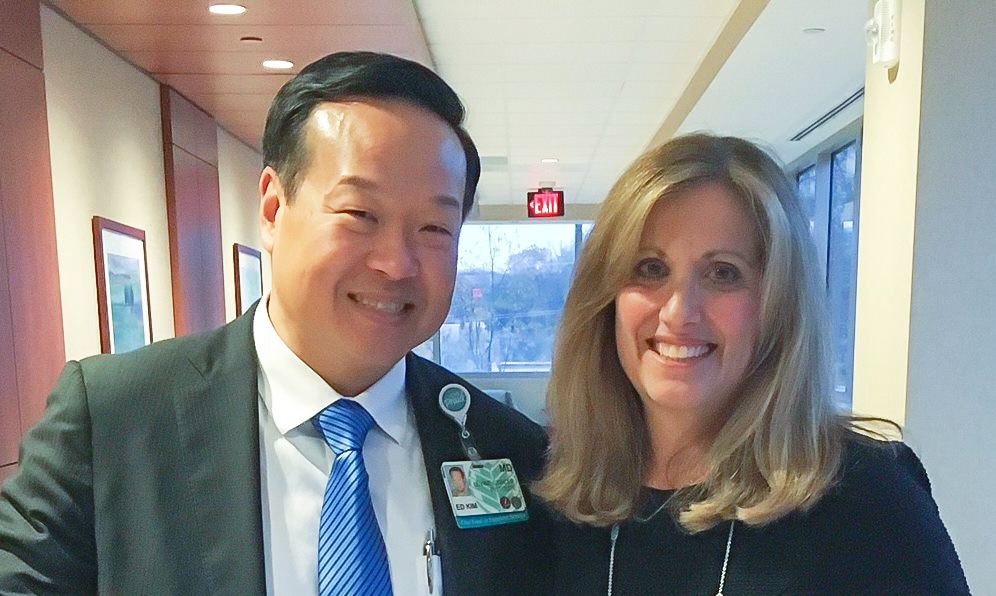
Sarcoma, a cancer of the connective tissue including bone, muscle, fat, and cartilage, represents just 1% of adult and 15% of childhood cancers. Because sarcoma and its 50 variations are less common forms of cancer, government-funded research is lacking. With the support of the Paula Takacs Foundation, Levine Cancer Institute and Levine Children’s Hospital have been able to open all clinical trials for which they are eligible; currently, there are six active clinical trials for sarcoma treatments. Most recently, enrollment has opened in a new sarcoma clinical trial with the primary objective of assessing the safety and toxicity profile of doxorubicin and pembrolizumab in previously treated or untreated patients with unresectable or metastatic soft tissue sarcoma.
Trials are open through the children’s oncology group for eligible patients age birth-30 and through the Sarcoma Alliance for Research Through Collaboration (SARC) for patients age 12 and older led by Dr. Edward Kim (above with Sue Udelson), Chair of Solid Tumor Oncology and Investigational Therapeutics at Levine Cancer Institute, who is spearheading ground-breaking research in this area. “Dr. Kim and his sarcoma team leveraged our funds in brilliant ways to achieve an incredible number of fine research projects to date, including LCI’s first investigator-initiated clinical trial for ages 12 and up,” says Sue.
On the pediatric side, Dr. Javier Oesterheld, Jeff Gordon Children’s Foundation Endowed Chair for Cancer and Blood Disorders and Specialty Medical Director – Pediatric Hematology/Oncology/BMT at Levine Children’s Hospital, is the principal investigator on a study which serves adult and pediatric patients through The Sunshine Project at Moffett Cancer Center in Florida. “Having Levine Children’s Hospital and Levine Cancer Institute in such proximity to each other means that there is no sarcoma that we can’t take care of,” says Dr. Oesterheld, beaming with pride. The team of renowned experts at both hospitals are dedicated to treating sarcoma patients with dignity and giving them and their families hope for a healthy future. For parents concerned about sarcoma in their children, Dr. Oesterheld advises them to pay attention to significant bone pain lasting more than 3-4 weeks. He also notes that any abnormal growth on the skin or abdomen that lasts longer than a few weeks should be looked at by a doctor. Awareness and vigilance are key to early detection and higher chances of survival.
With world-class medical minds leading clinical trials and a community of support rallying around sarcoma patients and their families, Sue is hopeful for a future free from sarcoma. “I look at how far Levine Cancer Institue’s sarcoma research program has already come with the funds we’ve raised, and it’s like going from 0 to 60 miles per hour in 3 seconds.” She adds, “The momentum is there, the families are behind it, and the road ahead is so exciting.”
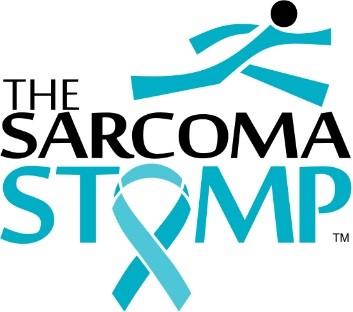 To learn more about the Sarcoma Stomp on April 27 and to register, volunteer or donate, begin at www.sarcomastomp.org. To learn more about sarcoma care at Levine Cancer Institute, click here.
To learn more about the Sarcoma Stomp on April 27 and to register, volunteer or donate, begin at www.sarcomastomp.org. To learn more about sarcoma care at Levine Cancer Institute, click here.
About the Paula Takacs Foundation for Sarcoma Research: The mission of the Paula Takacs Foundation for Sarcoma Research is to raise funds that will directly benefit the fight to end sarcoma. By supporting local, innovative research with a relentless commitment to excellence, we open a pathway for scientists and other research professionals to develop and offer cutting-edge treatment options to more sarcoma sufferers. Thus helping to expand our global hope for a cure.
Quotes in this article have been edited for length and clarity.

